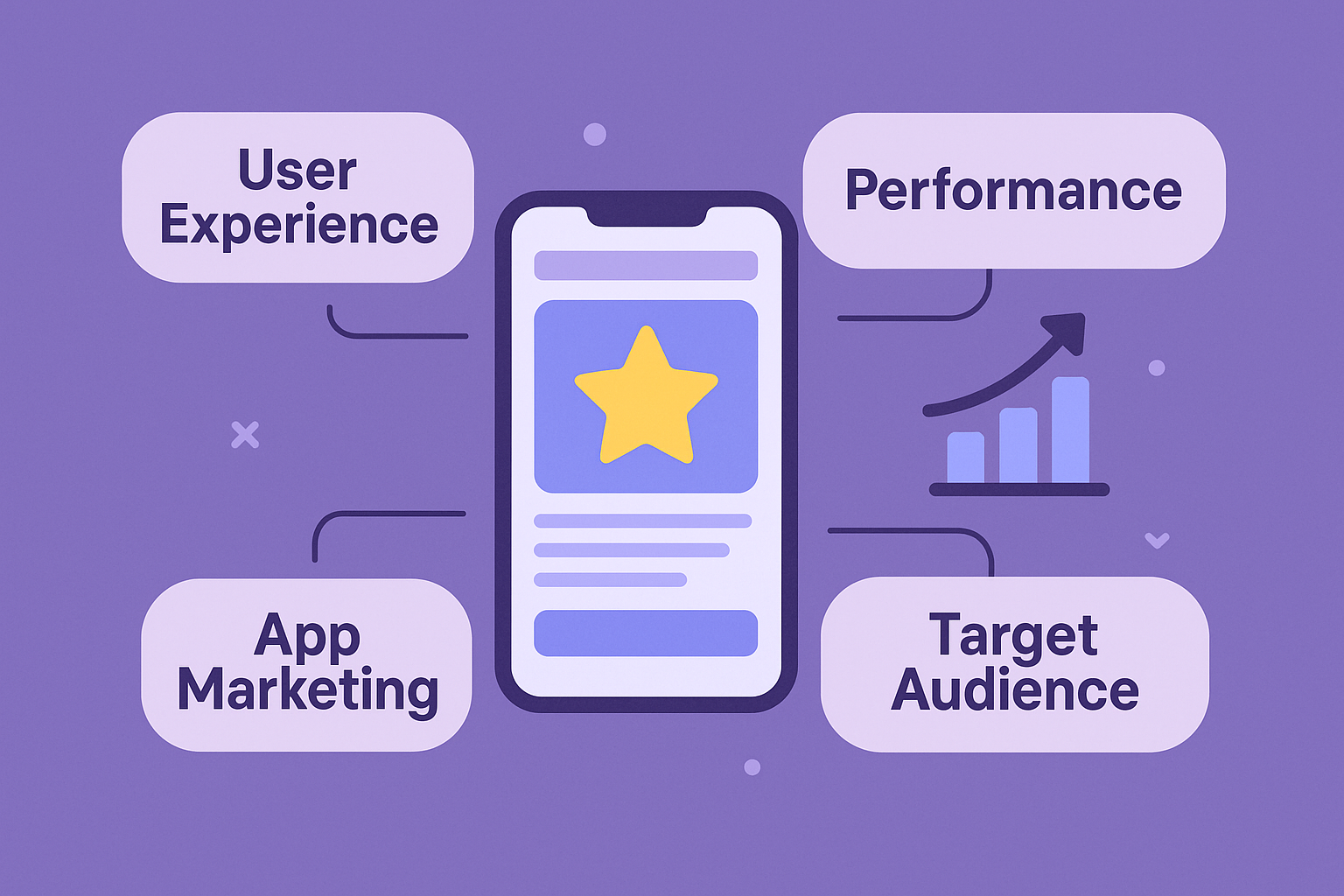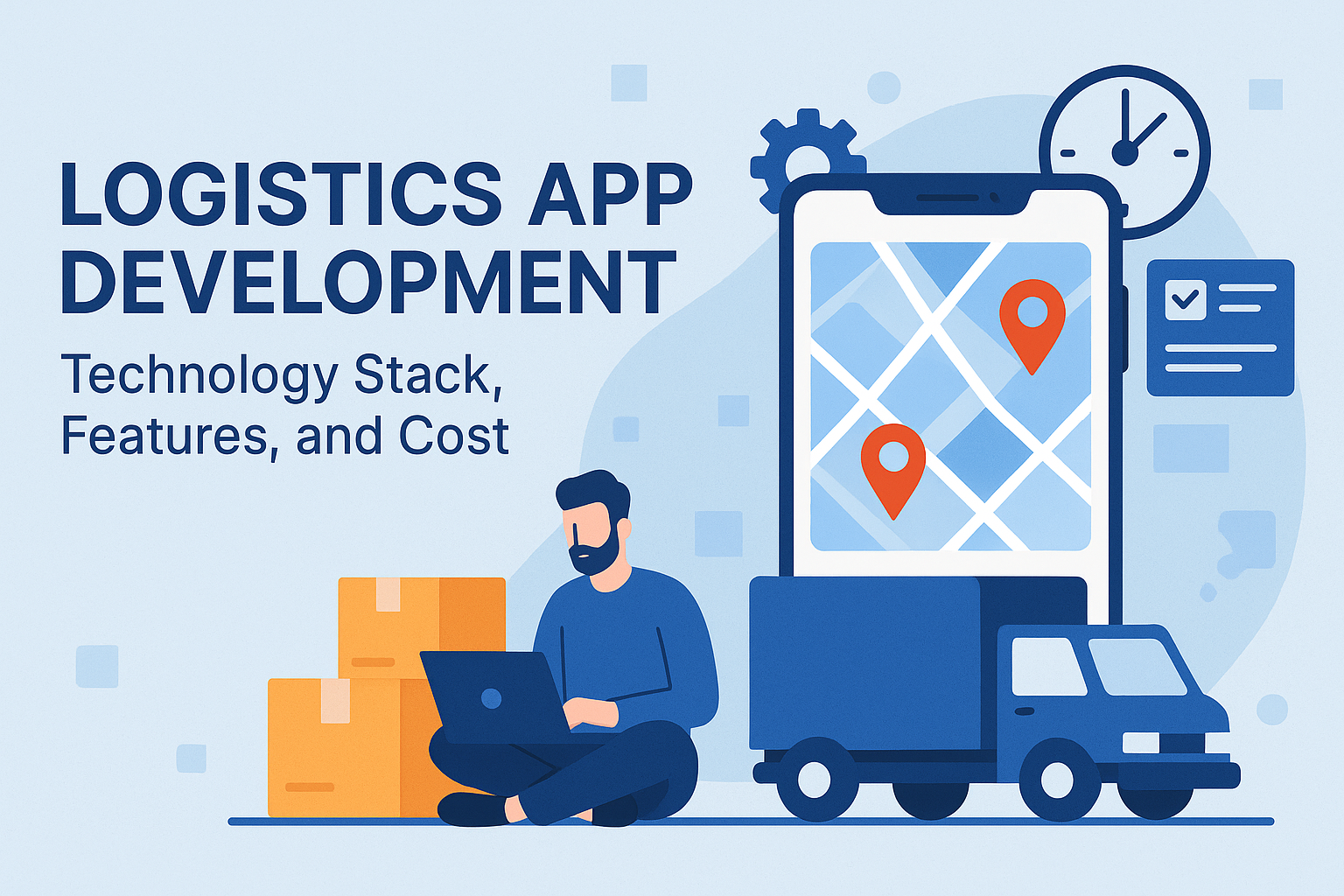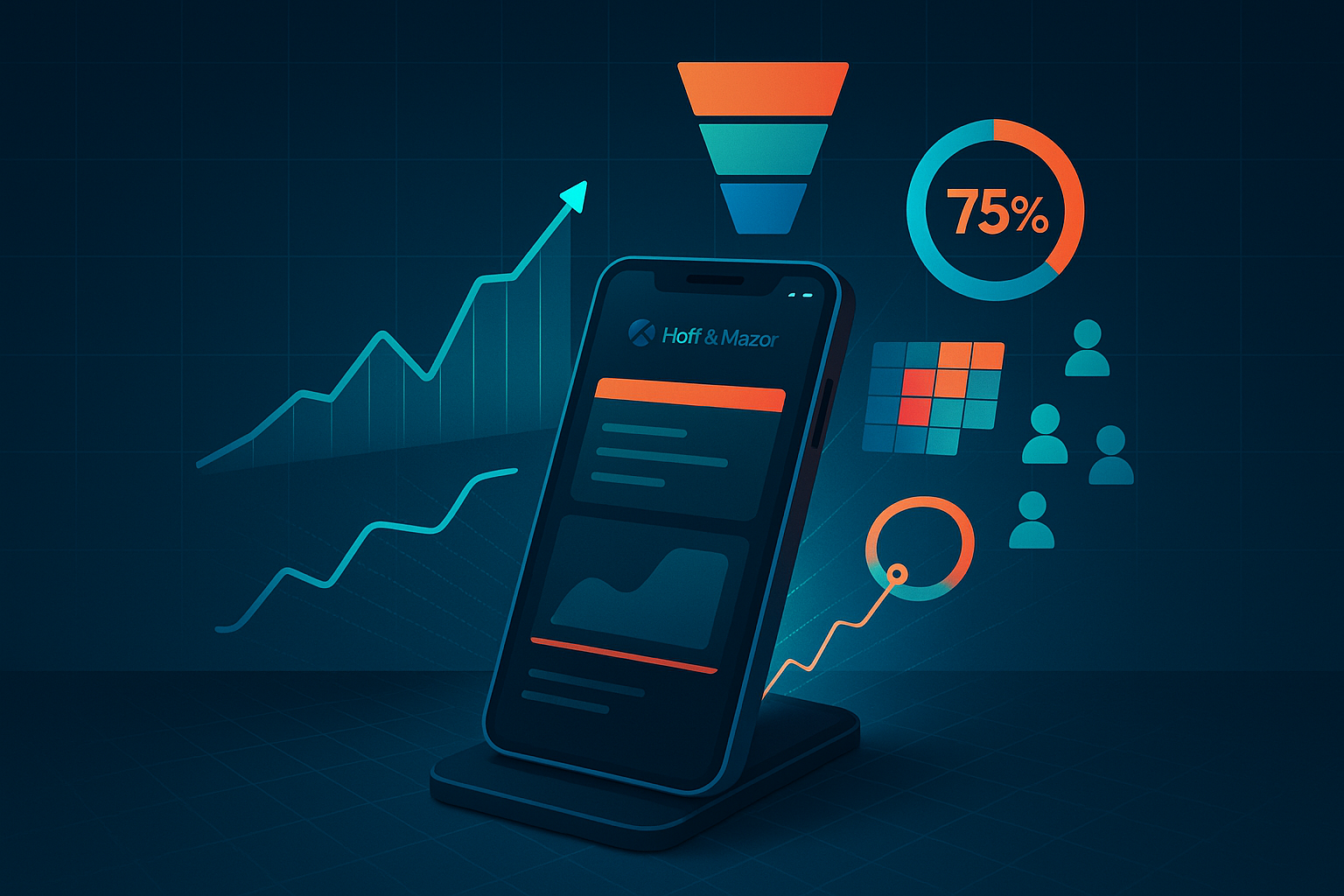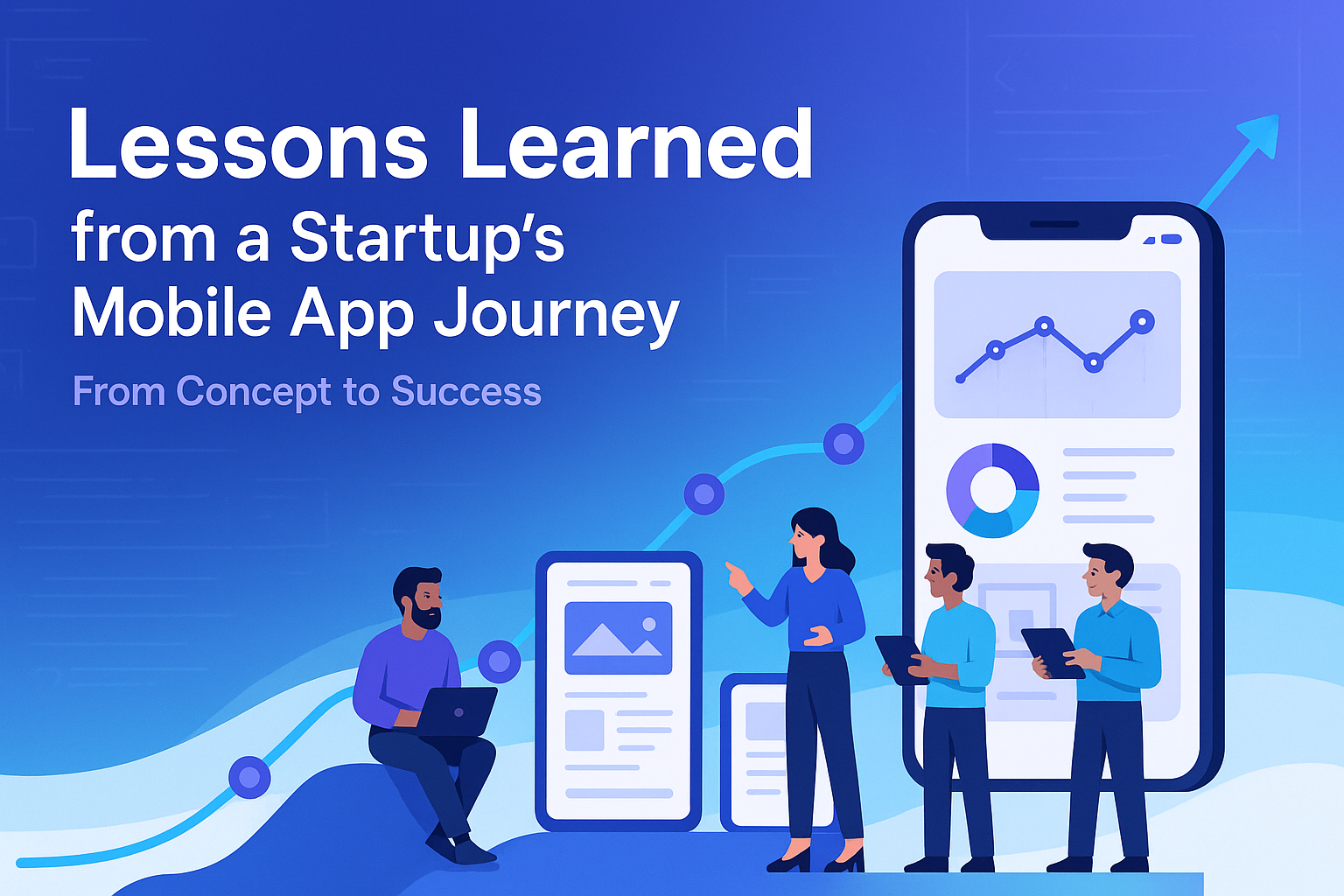- February 6, 2025
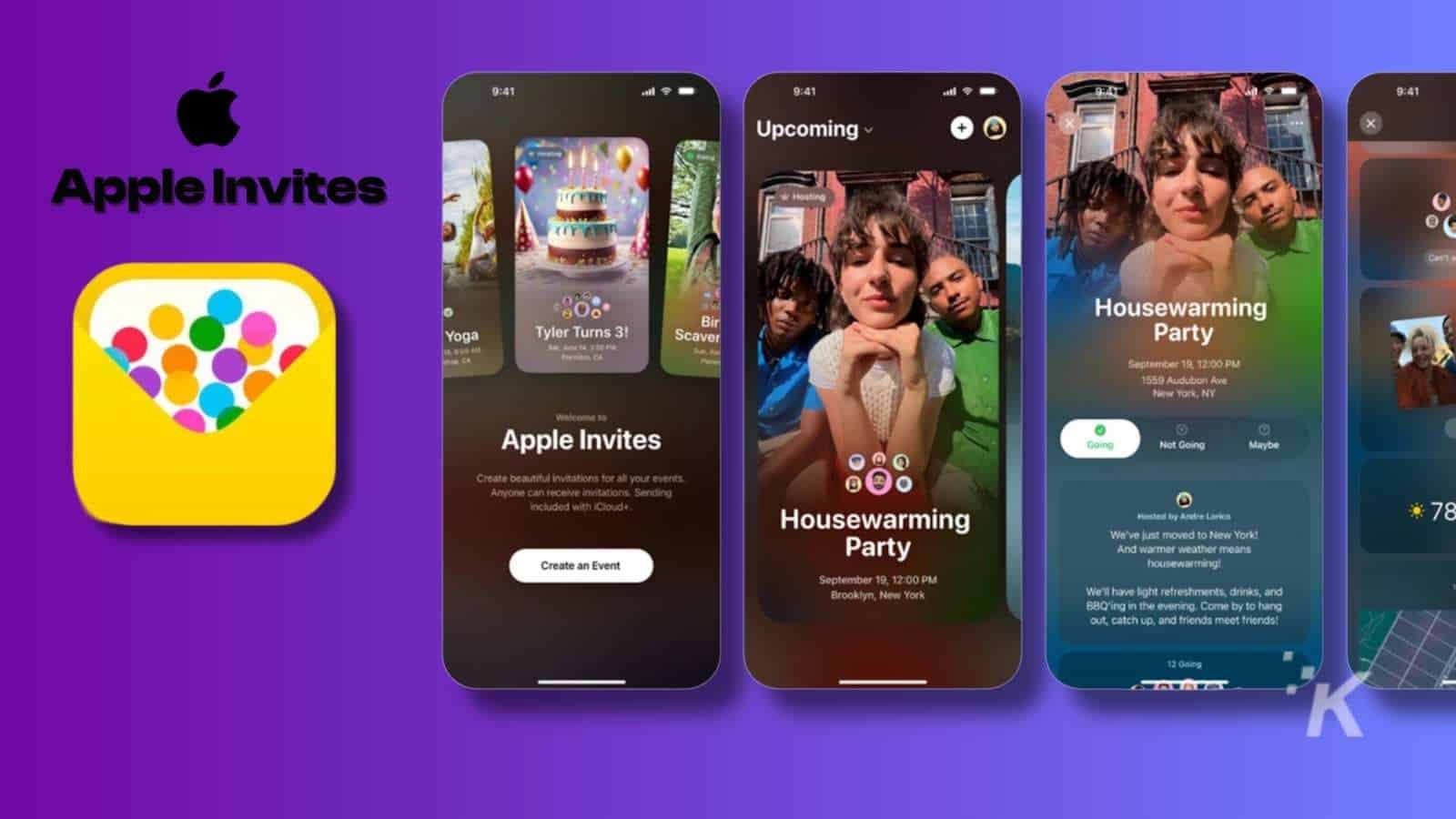
In a significant move to enhance user experience, Apple has unveiled its latest application, ‘Apple Invites,’ designed to streamline the creation and management of digital invitations. This innovative app aims to simplify event organization for iPhone users, integrating seamlessly with Apple’s ecosystem.
A New Era in Event Planning
Launched on February 4, 2025, Apple Invites offers users the ability to craft personalized invitations with ease. The app allows customization of invitation backgrounds using personal photos or selecting from a curated gallery. Integration with Apple Maps and Weather ensures guests receive accurate directions and real-time weather updates for event locations.
Key Features of Apple Invites
- Custom Invitations: Users can personalize their invitations by choosing images from their photo library or the app’s curated selection. The app also integrates with Apple Maps for directions and provides weather forecasts for the event day.
- Shared Albums: Event participants can contribute photos and videos to dedicated iCloud Shared Albums, creating a collective memory of the occasion.
- Collaborative Playlists: Apple Music subscribers can curate event-specific soundtracks, enhancing the ambiance and ensuring guests are in sync with the event’s mood.
- Apple Intelligence Integration: The app leverages generative AI tools like Image Playground for creating custom graphics and Writing Tools to refine invitation text, making the design process intuitive and efficient.
- Cross-Platform Accessibility: While the app is optimized for iPhone users, invitations can be managed via the web interface at icloud.com/invites. Notably, guests do not require an Apple account to RSVP, ensuring inclusivity.
Subscription Details
To utilize Apple Invites, users must subscribe to iCloud+, with plans starting at $0.99 per month. This subscription grants access to premium features, including enhanced storage and privacy options.
Comparative Landscape
Apple Invites enters a competitive market, facing established platforms like Partiful, Evite, and Paperless Post. While these services offer similar functionalities, Apple’s deep integration with its ecosystem provides a unique advantage for iPhone users.
User Experience and Accessibility
The app is designed to be user-friendly, allowing hosts to monitor RSVPs, send updates, and synchronize events with their calendars. Guests can RSVP without needing an Apple account or iPhone, though organizing events requires an iCloud+ subscription.
Availability
Apple Invites is available for download on the App Store for devices running iOS 18 or later. Web access is also provided through icloud.com/invites, ensuring flexibility for users across different platforms.
Implications for iOS App Development
The release of Apple Invites underscores the company’s commitment to enhancing user experience through innovative applications. This development presents a significant opportunity for businesses seeking to create custom iOS applications that leverage Apple’s ecosystem. Partnering with a reputable iOS app development company can help businesses design and deploy applications that meet the evolving needs of users.
Conclusion
Apple Invites represents a significant advancement in digital event planning, offering a suite of features that cater to both hosts and guests. Its seamless integration with Apple’s services and user-centric design make it a compelling choice for those looking to organize events efficiently. As the app gains traction, it will be interesting to observe its impact on the event planning landscape and its reception among users.
Also Read: iPhones with TikTok Installed
- February 5, 2025

Having a well-designed app can be a game-changer for your business. But if you’re wondering where to start, you might be thinking, “How do I find affordable app developers near me?” or “Who are the top app developers nearby?” Whether you’re looking to create a new mobile app or upgrade your existing digital presence, this guide will walk you through the entire process—from understanding your needs to selecting the perfect team for your project.
Introduction
Hiring local talent comes with many benefits. When you work with app developers in your area, communication becomes simpler, meetings can be held face-to-face, and there’s often a better understanding of local market trends. Local developers are more likely to grasp the unique characteristics of your target audience, and they may also be more accessible if issues arise. Whether you need someone who is an affordable app developer near me or you’re searching for top app developers nearby, working locally can lead to a smoother and more personalized experience.
This guide is designed to provide a step-by-step approach to finding and hiring the best app developers near you. We’ll break down the process into easy-to-follow steps. By the end, you’ll have a clear roadmap for assessing your needs, researching candidates, evaluating portfolios, and ultimately choosing the developer who fits your project perfectly. Think of this as a friendly conversation with a colleague who’s been through the process and wants to share some helpful tips.
Assess Your App Development Needs
Before you start searching for developers, take a moment to understand your project’s unique requirements. Knowing exactly what you need will save you time and help you communicate your vision clearly.
Define Your Project Requirements
Begin by outlining the core features and functions you want in your app. Consider the following questions:
- What is the purpose of your app?
Is it meant for sales, customer engagement, or maybe internal operations? - Which platforms are you targeting?
Do you need an app for iOS, Android, or both? Maybe you even need a responsive web app—yes, many businesses look for web app developers near me to cover all bases. - Who is your target audience?
Knowing your audience will influence design choices and functionality. For example, an app aimed at young professionals might have a sleek, modern interface compared to one designed for senior users.
Having a detailed list of requirements not only clarifies your vision but also provides potential developers with the information they need to understand your project. A well-defined scope can be as simple as a bullet-point list or a more detailed document outlining all the features and functionalities you envision.
Budget Considerations
Money matters, and setting a realistic budget is a crucial step. App development costs can vary widely depending on complexity, design, and additional features. Ask yourself:
- What is the maximum amount you’re willing to spend?
Remember, cheaper isn’t always better. While you might search for “affordable app developers near me,” it’s important to balance cost with quality. - Do you prefer a fixed-price project or an hourly rate?
Some developers work on a project basis with a one-time fee, while others might charge by the hour. Each model has its pros and cons, so choose one that aligns with your project’s size and timeline. - Have you considered hidden costs?
Sometimes extra charges come up for maintenance, upgrades, or additional features. Be sure to ask about these in advance to avoid surprises later.
Timeline Establishment
Establishing a timeline is another key part of planning your app development. Consider these points:
- When do you need your app to launch?
Setting realistic deadlines for milestones and final delivery helps keep the project on track. - How flexible is your timeline?
If you’re on a tight schedule, you might need to prioritize certain features or opt for developers who can work quickly without sacrificing quality.
By clearly defining your project’s scope, budget, and timeline, you’re laying a strong foundation for the next steps. This planning phase will make it easier to compare different developers and choose the one who best matches your needs.
Research Potential App Developers Near You
Now that you’ve outlined your project’s needs, it’s time to start your search. Finding the right app developers near you doesn’t have to be overwhelming if you know where to look.
Online Directories and Platforms
One of the best places to start is by exploring online directories and freelance platforms. Websites like Thumbtack and Clutch offer detailed profiles of app development firms and individual freelancers. These platforms allow you to filter by location, expertise, and client reviews. This way, you can easily find a list of candidates who meet your criteria.
When browsing these directories, keep an eye out for key phrases such as “Affordable app developers near me” or “Top app developers nearby.” Reviews and ratings from previous clients provide valuable insights into the quality and reliability of the developers you’re considering.
Local Networking Events and Meetups
Networking isn’t just for finding a job—it’s also a fantastic way to connect with local talent. Tech meetups, workshops, and seminars offer an opportunity to meet app developers in person. These events provide a casual setting where you can ask questions, share your ideas, and even get a feel for the developer’s personality and work style.
I remember attending a local tech meetup last year where I met a group of passionate developers. Their enthusiasm and willingness to share experiences made it clear that local networking events can be a goldmine for finding skilled professionals who are serious about their craft.
Educational Institutions and Tech Hubs
Don’t overlook the resources available at local universities and tech incubators. Many educational institutions have programs dedicated to app development and technology innovation. Partnering with a university or tech hub can help you discover emerging talent who bring fresh ideas to the table.
Reaching out to these institutions not only opens up opportunities for collaboration but also helps support the local tech community. You might find that partnering with promising new developers can offer the dual benefit of affordability and innovation.
Evaluate Developer Portfolios
Once you’ve compiled a list of potential developers, the next step is to dig deeper into their portfolios. A developer’s past work is a strong indicator of their capabilities and style.
Review Past Projects
Start by looking at the developer’s previous projects. Ask yourself:
- Does the design aesthetic match your vision?
Look at the visual appeal, layout, and user interface of the apps they’ve built. - Is the functionality smooth and intuitive?
A well-developed app should not only look good but also be user-friendly and free from glitches. - Do they have experience in your industry?
Industry-specific knowledge can be a huge plus, especially if your app requires specialized features.
If you’re new to app development, it might be helpful to review an app guide that breaks down the basics. This can give you a clearer idea of what to look for in a high-quality portfolio.
Seek Relevant Industry Experience
Experience matters. Developers who have worked on projects similar to yours are likely to understand the unique challenges and requirements of your industry. Whether you need someone who’s built retail apps, healthcare solutions, or educational platforms, finding developers with relevant experience can save you time and effort in the long run.
When evaluating experience, don’t just rely on the number of projects completed—look for depth and consistency in their work. Check if their projects have received positive feedback or awards, and consider reaching out to previous clients if you need additional insights.
Check Client Testimonials and Case Studies
Client testimonials and case studies are invaluable in assessing a developer’s reliability and success rate. Positive reviews from past clients can provide assurance that the developer not only meets deadlines but also delivers quality work. Look for detailed case studies that explain the challenges faced during development and how they were overcome. This level of transparency indicates a developer who is honest about their process and results.
For example, reading about a project where a developer overcame complex technical challenges can give you a sense of their problem-solving skills. Such stories often highlight not just the final product but the journey it took to get there, making it easier for you to envision how they might handle your project.
Conduct Interviews and Assess Compatibility
Even with a stellar portfolio, the human element is key. Finding the right developer is as much about technical skills as it is about compatibility and communication.
Prepare a List of Questions
Before scheduling interviews, prepare a list of questions that cover both technical aspects and soft skills. Some questions you might ask include:
- Can you walk me through your development process?
This helps you understand how they manage projects from start to finish. - What tools and technologies do you typically use?
This gives insight into whether they’re up-to-date with current trends and tools. - How do you handle challenges or unexpected issues during development?
Problem-solving is a critical skill in app development.
Having these questions ready ensures that you cover all bases during the interview. It also helps you compare different developers more objectively.
Evaluate Communication Skills
Effective communication is essential for a successful project. During your interactions, note how clearly the developer explains technical concepts. Are they patient and willing to answer your questions? Do they ask thoughtful questions about your project? A developer who communicates well is more likely to keep you updated on progress and handle any issues promptly.
I once worked with a developer who explained complex coding issues in a way that made sense—even for someone without a technical background. That experience not only built trust but also made collaboration smoother.
Assess Cultural and Work Style Fit
Beyond technical skills and communication, you need to feel comfortable working with your developer. Consider whether their work style and company culture align with yours. Do they work well in a team? Are they flexible and open to feedback? Sometimes, the best technical candidate might not be the right fit culturally, so trust your instincts.
As you interview, ask about their preferred work methods, how they manage deadlines, and how they collaborate with clients. A developer who shares your values and work ethic can turn a challenging project into a rewarding partnership.
Bringing It All Together
Finding the best app developers near you is a journey that starts with understanding your own needs. It involves researching and evaluating potential candidates, reviewing portfolios, and conducting interviews to assess both technical skills and compatibility. Here are a few parting tips to sum up the process:
- Clarify Your Vision: Define your project requirements, budget, and timeline clearly. The more detailed your plan, the easier it is to find developers who can deliver exactly what you need.
- Leverage Local Resources: Utilize online directories, local networking events, and educational institutions to find talent. Connecting with developers face-to-face can reveal insights that online profiles may not show.
- Examine the Work: Take your time reviewing portfolios and case studies. Look for a consistent track record of high-quality work and positive client feedback.
- Engage and Interview: Prepare thoughtful questions and have open conversations. A developer’s ability to communicate and work collaboratively is just as important as their technical prowess.
Discuss Technical Proficiencies
When it comes to developing your app, technical skills are the backbone of the project. You need a team that knows their stuff. Here’s how you can make sure they do.
Programming Languages and Frameworks
Imagine you’re ordering a meal at your favorite restaurant—you expect the chef to know how to prepare your dish just right. In the app world, your “dish” could be an iOS or Android app, and the “chef” is the developer. For an iOS app, expertise in Swift is essential, while for an Android app, Kotlin might be the best choice. Also, if you’re looking into web app development, make sure you’re asking about experience with popular frameworks like React or Angular.
- How to Ask: When speaking with potential developers, ask them which programming languages and frameworks they specialize in. You might say, “I’m looking to build an app with a great user interface and seamless performance. Can you walk me through your experience with Swift for iOS or React for web apps?” This helps ensure that you’re talking with someone who truly understands the technology behind your project.
- Real-Life Tip: I once worked with a developer who boasted about general coding skills. However, when I asked for details on their experience with Kotlin for Android, they hesitated. That little red flag helped me look for a better match, and I ended up finding affordable app developers near me who had the necessary technical background.
Design and User Experience (UX) Capabilities
Think about the last app you loved using. Chances are, it wasn’t just the functionality but also the design and overall user experience that made it so appealing. You want your app to be intuitive and engaging, and that means partnering with someone who’s skilled in design.
- Key Questions: Ask potential developers about their approach to creating user-friendly designs. Questions like, “How do you ensure the app’s design meets user expectations?” or “Can you share examples of intuitive interfaces you’ve built?” can give you a good sense of their design philosophy.
- Personal Insight: I remember a time when I downloaded an app that was visually stunning but incredibly hard to navigate. It taught me that even the most attractive design must serve the user. So, when looking for top app developers nearby, ensure they value user experience as much as functionality.
Quality Assurance and Testing Procedures
Building an app isn’t just about coding and design—it’s also about ensuring the app runs smoothly. Quality Assurance (QA) is a critical part of the development process that tests the app’s reliability and performance.
- Ask About Their Process: Don’t hesitate to ask, “What testing procedures do you follow to ensure the app is bug-free?” or “How do you handle quality assurance?” You need to know that they have a systematic approach to catch issues before the app goes live.
- Why It Matters: Regular testing and QA help avoid those pesky bugs that can turn a promising app into a frustrating experience for users. Knowing that your developer takes this step seriously gives you peace of mind.
Consider Post-Launch Support and Maintenance
Your app’s journey doesn’t end once it’s launched. Just like a car, an app needs regular checkups and sometimes fixes. Here’s why post-launch support is so important and what you should look for.
Ongoing Support Services
Even after your app goes live, you might need tweaks, updates, or even quick fixes to keep it running smoothly. This is where ongoing support comes in.
- What to Look For: Ask your potential partner if they offer continued support after launch. You might say, “What kind of ongoing support services do you provide for updates, bug fixes, or new features?” It’s important that they are available to help you make improvements and address any issues that pop up later.
- Real-World Example: I once launched an app without arranging for post-launch support, and it quickly became a hassle when small bugs started to appear. That experience taught me the value of a developer who is committed to the long-term success of the app.
Maintenance Packages
Maintenance is like routine servicing for your app—it ensures that the app remains secure, efficient, and up-to-date with new technologies or market trends.
- Discuss Your Options: When talking to developers, inquire about any maintenance packages they offer. Ask, “Do you have a maintenance plan that can help keep my app running smoothly?” This will help you understand if they’re prepared for the long haul.
- Budget Considerations: Affordable app developers near me often offer various maintenance packages tailored to different needs and budgets. Ensure you choose a plan that fits your long-term goals without breaking the bank.
Future Scalability
Your app might start small, but you may have big plans for the future. Scalability means that as your user base grows, your app can handle more traffic and data without a hitch.
- Key Questions: Ask, “How do you design apps to accommodate future growth?” or “What measures do you take to ensure the app remains scalable?” This conversation helps ensure that your chosen developers are thinking ahead and not just focusing on the present needs.
- A Helpful Analogy: Think of your app as a growing tree. You want it to be planted in soil that can nourish it for years to come. Choosing developers who prioritize scalability ensures your app can grow as your business expands.
Compare Proposals and Make an Informed Decision
After you’ve talked with a few candidates, it’s time to compare their proposals. This step is crucial for making a choice that aligns with both your vision and your budget.
Analyze Cost Estimates
Cost is always a factor. You need to ensure that you’re getting a good balance between quality and affordability.
- Budgeting Tips: Request detailed cost estimates from each candidate. Ask them to break down their pricing structures so you understand where every dollar is going. This transparency is key—especially if you’re searching for affordable app developers near me.
- Compare Apples to Apples: When reviewing proposals, compare similar services and deliverables. Sometimes a higher cost might be justified by a more comprehensive service package. On the other hand, if one proposal is significantly cheaper, it’s worth investigating what might be missing.
Evaluate Proposed Timelines
Time is money, and delays can be frustrating. Your project’s timeline is just as important as its budget.
- Set Clear Expectations: Ask, “What is the estimated timeline for this project?” and “How do you handle delays?” Understanding their scheduling process helps you gauge whether their projected timelines meet your needs.
- Trusting the Process: When one developer promises a quick turnaround without a clear plan, it might be a red flag. You want someone who is not only fast but also thorough and reliable.
Trust Your Instincts
Sometimes, beyond the numbers and timelines, you have to trust your gut. Your comfort level with the developer’s expertise and communication style is crucial.
- Personal Connection: Do you feel like you can easily communicate with them? Are they listening to your ideas and offering constructive feedback? Trust your instincts—if something feels off during your conversations, it might be best to look elsewhere.
- Encouraging Note: Remember, you’re not just hiring a service; you’re partnering with someone who will help bring your vision to life. The right partner will make you feel confident and excited about the journey ahead.
Finalizing the Partnership
Once you’ve made your decision, it’s time to put everything into a formal agreement. Finalizing the partnership carefully ensures that both parties are on the same page and that expectations are clear.
Contractual Agreements
A well-drafted contract is your safety net. It outlines the scope of work, payment terms, timelines, and confidentiality agreements.
- What to Include: Ensure that your contract clearly defines what is expected from both sides. This includes deliverables, project milestones, and any specific requirements you discussed. Ask, “Does the contract cover all aspects of our project?” It’s always a good idea to have a legal professional review the document before you sign.
- Personal Experience: I once started a project without a solid contract, and misunderstandings about deliverables led to delays and frustration. A clear, detailed contract prevents such issues and sets the stage for a smooth collaboration.
Establish Communication Protocols
Effective communication is key to any successful project. Decide upfront how you’ll stay in touch and share updates.
- Set a Schedule: Agree on regular meetings or status updates. This could be weekly video calls, progress reports via email, or even using project management tools. Ask, “How frequently will we check in, and what’s the best way to communicate?” Establishing clear communication protocols from the start helps avoid misunderstandings.
- Interactive Tip: Consider using collaboration tools like Slack or Trello, which many top app developers nearby use to keep projects organized and transparent. It’s all about making sure everyone is on the same page, every step of the way.
Set Milestones and Deliverables
Breaking your project into manageable pieces helps you track progress and keeps everyone accountable.
- Define Clear Milestones: Work with your developer to create a roadmap that includes key milestones. For example, design mockups, prototype development, initial testing, and final launch. Ask, “What are the key milestones, and when do you expect to reach them?” This roadmap will serve as a guide throughout the project.
- Celebrating Progress: Each milestone reached is a mini-victory. It’s a chance to celebrate progress, review the work done, and make any necessary adjustments before moving forward. This approach not only keeps the project on track but also builds your confidence in the process.
By following these steps, you’re well on your way to finding the ideal team to bring your app idea to life. Whether you’re searching for affordable app developers near me or top app developers nearby, remember that the right match will help you create an app that’s not only functional but also engaging and user-friendly.
For those interested in further insights into the world of mobile development, check out some additional resources:
- Learn the basics of creating an app by reading our app guide.
- Avoid common mistakes that can derail your project.
- Dive into the technical details of building a robust app by exploring app architecture.
- Wondering about the app cost? Get a breakdown of expenses and budgeting tips.
- For those focused on speed and efficiency, our performance tips can be very useful.
- And if you’re concerned about security, learn how to secure user data.
Conclusion
Choosing the right app developer is a journey that requires careful planning, clear communication, and a bit of intuition. Let’s wrap up the key points and leave you with some final thoughts.
Taking the time to thoroughly research and evaluate potential developers is crucial. You’re not just looking for someone who can code; you’re looking for a partner who understands your vision and can bring it to life. Remember:
- Technical Proficiency: Confirm that they’re well-versed in the programming languages and frameworks required for your app.
- User Experience: Ensure they have a knack for design and can create an intuitive, engaging interface.
- Quality Assurance: Make sure they have a strong process for testing and ensuring the app performs reliably.
- Post-Launch Support: Don’t forget to consider what happens after the app is live. Ongoing support and maintenance are key to long-term success.
- Comparison and Decision: Analyze proposals carefully, comparing cost estimates and timelines, and trust your instincts about whether the developer is the right fit.
Final Thoughts
Choosing the right app developer is a bit like finding a dance partner—you need someone who moves in sync with you, understands your rhythm, and can help you create something beautiful. By following the steps we’ve outlined—from discussing technical proficiencies to finalizing the partnership—you’ll be well on your way to a successful app launch.
If you ever feel overwhelmed during the process, remember that you’re not alone. Many have walked this path before, and with a little research, patience, and trust in your instincts, you’ll find the right partner for your project. Whether you’re searching for affordable app developers near me, top app developers nearby, or web app developers near me, the right choice is out there.
So, take your time, ask plenty of questions, and don’t settle until you’re completely confident in your decision. After all, this is your vision coming to life, and you deserve nothing but the best.
Feel free to leave any questions or share your experiences in the comments below. Your feedback not only helps others on a similar journey but also creates a community of engaged, informed creators. Happy app building!
- February 4, 2025

DeepSeek vs ChatGPT – In an era where artificial intelligence is reshaping industries and revolutionizing workflows, choosing the right AI chatbot can significantly impact productivity, efficiency, and innovation. Two prominent players in this arena are DeepSeek and ChatGPT. While ChatGPT has become a household name with its broad-based conversational abilities, DeepSeek offers a specialized, open-source alternative that excels in technical tasks and mathematical computations. This ultimate guide will walk you through every nuance of these platforms—from their underlying architectures to real-world applications—helping you determine which AI solution aligns best with your needs.
Table of Contents
ToggleIntroduction
Artificial intelligence has emerged as a driving force in today’s digital transformation. With countless applications ranging from customer service to high-end data analytics, AI chatbots are becoming indispensable tools for both businesses and individual professionals. Two notable contenders in this space are DeepSeek and ChatGPT.
- DeepSeek is renowned for its specialized, open-source framework and exceptional performance in handling technical and mathematical challenges.
- ChatGPT has built a reputation for its versatile, conversational approach and ease of use across diverse topics.
This article aims to explore these two platforms in detail, offering insights that go beyond surface-level comparisons. We will cover everything from the core technology and performance metrics to the community support and future trends influencing these tools.
Understanding AI Chatbots

Before delving into the specifics, it is important to understand the broader context of AI chatbots. These tools leverage advanced machine learning models to process natural language, enabling them to interact with users, answer questions, generate content, and even perform complex tasks. AI chatbots have transformed traditional customer service, coding assistance, and educational tools, making them more interactive and responsive.
As AI models continue to evolve, they are now tailored to serve specialized functions. While some focus on delivering robust conversational experiences, others are designed to handle technical tasks with pinpoint accuracy. DeepSeek and ChatGPT represent these different philosophies, each excelling in their respective domains.
Model Architectures: The Heart of AI
At the core of any AI chatbot is its model architecture. This determines how the system processes language, manages data, and generates responses. Let’s explore how DeepSeek and ChatGPT are built and what makes each of them unique.
DeepSeek’s Mixture-of-Experts (MoE) Model
DeepSeek employs a Mixture-of-Experts (MoE) approach. Imagine having a team of specialists, where only the expert best suited for a particular task is engaged at any given time. With an impressive 671 billion parameters, DeepSeek selectively activates only the most relevant segments of its neural network for each query. This selective process not only enhances computational efficiency but also boosts performance in specialized tasks such as mathematics and technical coding challenges.
Key benefits of DeepSeek’s MoE model include:
- Resource Efficiency: Reduced computational overhead by engaging only the necessary components.
- Specialization: Enhanced accuracy for technical and mathematical queries, as each “expert” is fine-tuned for specific types of problems.
- Scalability: The open-source nature allows developers to tailor and extend its functionality based on project needs.
ChatGPT’s Transformer Model
ChatGPT, developed by OpenAI, utilizes the well-established transformer model architecture. Unlike the selective activation in MoE models, ChatGPT processes each query using a fixed set of parameters. This results in a consistent performance level across diverse topics and tasks. The transformer model is known for its ability to capture contextual relationships in text, making it particularly strong in generating coherent and context-aware responses.
Advantages of the transformer model include:
- Consistency: Uniform processing ensures that all queries receive a comprehensive and detailed response.
- Versatility: Capable of handling a wide array of topics, from creative writing to technical problem-solving.
- User-Friendliness: Its architecture contributes to a polished, intuitive interface that appeals to both technical and non-technical users.
Performance Metrics and Strengths – DeepSeek vs ChatGP
When evaluating AI models, performance metrics are crucial. They help determine how each platform handles real-world tasks and what kind of results you can expect.
Technical Proficiency and Accuracy
DeepSeek’s Technical Edge
DeepSeek’s strength lies in its technical precision. It excels in:
- Mathematical Computation: Achieving accuracy rates that surpass many competitors, particularly in solving complex mathematical problems.
- Coding Assistance: Rapid code generation and efficient debugging support, making it a favorite among developers who need to iterate quickly.
- Structured Problem Solving: Its ability to break down complex technical problems into smaller, manageable components allows for faster resolution and higher accuracy.
ChatGPT’s Versatile Accuracy
While ChatGPT might not match DeepSeek’s specialization in technical tasks, it offers:
- Broad-Spectrum Accuracy: Delivers detailed and contextually relevant responses across various subjects, ensuring that even non-technical queries are addressed with clarity.
- Nuanced Understanding: Its transformer-based architecture provides a deep contextual understanding, enabling it to generate responses that are both informative and engaging.
- Educational Value: Its ability to explain complex topics in simple terms makes it an excellent tool for learners and educators alike.
Conversational and Creative Capabilities
ChatGPT’s Conversational Mastery
One of ChatGPT’s standout features is its exceptional conversational ability:
- Rich Contextual Responses: The model is designed to remember and incorporate context, leading to more coherent and engaging dialogues.
- Creative Content Generation: Whether it’s generating story ideas, writing blog posts, or crafting compelling narratives, ChatGPT’s output is polished and engaging.
- Adaptive Tone: It can shift its tone to match the intended audience, making it versatile for both casual conversations and professional communications.
DeepSeek’s Focused Creativity
Although primarily engineered for technical tasks, DeepSeek also offers:
- Targeted Creativity: Provides precise and focused responses when creative brainstorming is needed for technical projects.
- Efficiency in Ideation: Its ability to generate well-developed solutions for specific problems means that it can help users quickly arrive at innovative ideas without unnecessary fluff.
Accessibility, Customization, and Cost Analysis

The practical aspects of any AI tool include its accessibility, cost structure, and the level of customization it offers.
DeepSeek: Open-Source Freedom
- Accessibility:
DeepSeek is entirely open-source, which means it is free for anyone to use. Developers can download the code, modify it, and integrate it into their own projects without any licensing fees. - Customization:
Its open-source nature provides unparalleled customization. Users with the technical expertise can tailor the model to meet very specific needs, integrate additional functionalities, or even improve its existing capabilities. - Cost Efficiency:
Since it’s free and optimized for resource efficiency, DeepSeek is particularly attractive for startups, small businesses, and educational institutions with limited budgets.
ChatGPT: Freemium with Advanced Features
- Accessibility:
ChatGPT operates on a freemium model. A basic version is available for free, which is sufficient for many casual users. However, for access to more advanced features and faster processing times, a subscription is required. - User-Friendliness:
The platform is designed to be highly accessible, with a user-friendly interface that caters to both technical experts and novices. This makes it a versatile choice for a wide range of users. - Cost Considerations:
While the subscription model means a recurring cost, many businesses and professional users find that the investment pays off in the form of enhanced capabilities, robust support, and a polished user experience.
Feature-By-Feature Breakdown
To truly understand which AI tool might be right for you, it’s helpful to compare their features in detail. Below, we break down key aspects of writing assistance, coding, brainstorming, and more.
Writing Assistance and Content Creation
DeepSeek’s Technical Writing
- Precision and Clarity:
DeepSeek excels at generating technical documentation and formal content. Its output is precise, making it ideal for writing user manuals, technical specifications, and data project documentation. - Structured Output:
The model is adept at organizing information in a clear, logical format, which is particularly beneficial for academic and scientific writing. - Limited Creative Flair:
While it can handle creative tasks, its focus remains on technical accuracy rather than narrative creativity.
ChatGPT’s Versatile Content Creation
- Engaging Narratives:
ChatGPT generates content that is not only accurate but also engaging. Its ability to craft compelling narratives makes it a popular choice for bloggers, marketers, and educators. - Contextual Richness:
It offers nuanced explanations and can adapt its tone to suit various audiences, from casual readers to professional stakeholders. - Interactive Storytelling:
The tool is also capable of interactive content generation, which is useful for creating dynamic user experiences and educational materials.
Coding, Debugging, and Technical Queries
DeepSeek for Rapid Code Generation
- Speed and Efficiency:
For developers, DeepSeek provides rapid code generation, making it an excellent tool for prototyping and iterative development. Its streamlined approach helps save valuable time. - Technical Accuracy:
It often delivers concise and correct code snippets, especially for well-defined, technical queries. This precision is invaluable when handling complex programming challenges. - Steep Learning Curve:
While powerful, its technical nature may require users to have a solid understanding of coding principles to effectively implement and customize its outputs.
ChatGPT as an Educational Coding Assistant
- Step-by-Step Explanations:
ChatGPT offers detailed, step-by-step explanations alongside code snippets, which makes it an excellent resource for beginners and those looking to deepen their coding knowledge. - Debugging Support:
Its ability to understand and explain errors in code makes it a valuable debugging tool, guiding users through troubleshooting processes. - Broader Scope:
ChatGPT’s versatility extends beyond just generating code—it can also discuss programming concepts, best practices, and provide comparative insights on different coding approaches.
Brainstorming and Creative Problem Solving
Focused Ideation with DeepSeek
- In-Depth Analysis:
When you need to explore a singular, detailed approach to a problem, DeepSeek provides thorough, well-structured responses. Its strength lies in delivering in-depth solutions that leave no stone unturned. - Targeted Solutions:
This model is particularly effective when a project requires a focused, technical strategy rather than multiple creative angles. - Less Variation:
Compared to ChatGPT, DeepSeek might generate fewer alternative ideas, which is ideal when you’re looking for depth over breadth.
ChatGPT’s Broad Ideation
- Multiple Perspectives:
ChatGPT is excellent for brainstorming sessions, offering a variety of ideas and approaches. This diversity can spark creative breakthroughs and innovative strategies. - Adaptive Creativity:
Whether you’re looking to generate marketing slogans, strategic outlines, or innovative product ideas, ChatGPT’s ability to adapt its output to your creative needs is a significant asset. - Interactive Dialogue:
Its conversational style encourages further exploration, allowing you to refine and expand on ideas in real time.
Learning, Research, and Data Analysis
DeepSeek’s Research Precision
- Concise Fact-Checking:
For researchers needing quick, factual answers, DeepSeek’s focus on precision is invaluable. It delivers concise, accurate information without unnecessary elaboration. - Technical Expertise:
Its ability to handle complex data queries and technical topics makes it a trusted resource in scientific and engineering domains. - Limited Contextual Expansion:
While it is precise, its responses might lack the broader context sometimes needed for educational purposes, requiring users to supplement with additional research.
ChatGPT as an Educational Companion
- Tutorial-Style Explanations:
ChatGPT excels at breaking down complex topics into digestible segments, making it a powerful educational tool for self-learners, educators, and students. - Comprehensive Analysis:
It provides detailed context, historical background, and comparative insights, which can enrich the learning experience and support in-depth research. - Engagement:
Its ability to engage users with conversational dialogue helps in retaining attention and facilitating a deeper understanding of complicated subjects.
Industry Applications and Real-World Use Cases

The applications of AI chatbots are diverse and span across various industries. Understanding how DeepSeek and ChatGPT are deployed in real-world scenarios can help illustrate their practical value.
DeepSeek in Technical Industries
- Engineering and Data Science:
DeepSeek is widely used in fields that demand high precision, such as engineering simulations, data analysis, and technical research. Its efficiency in mathematical computations and coding makes it indispensable for projects that require detailed technical validation. - Software Development:
Many development teams leverage DeepSeek for rapid prototyping, debugging, and generating code snippets that are both efficient and precise. - Academic Research:
In scientific research, where every calculation and data point matters, DeepSeek’s precision helps in verifying hypotheses and generating accurate models.
ChatGPT in Business and Creative Industries
- Content Creation and Marketing:
ChatGPT has become a go-to tool for content creators, marketers, and social media managers. Its ability to generate engaging content, craft detailed blog posts, and develop creative campaigns has seen widespread adoption across industries. - Customer Support and Virtual Assistants:
With its natural language understanding, ChatGPT is frequently deployed in customer service roles—handling FAQs, providing product information, and delivering consistent user support. - Educational Platforms:
Many online educational tools and learning management systems have integrated ChatGPT to provide interactive tutoring, real-time Q&A sessions, and personalized learning experiences.
Community, Ecosystem, and Integration Possibilities
Both DeepSeek and ChatGPT have strong communities and ecosystems that enhance their value through shared knowledge, plugins, and integrations.
DeepSeek’s Open-Source Community
- Collaborative Development:
Being open-source, DeepSeek benefits from contributions by a global community of developers. This collaboration leads to continuous improvements, bug fixes, and new feature integrations. - Customization and Extensions:
Users can create and share custom modules, integrations, and plugins that extend the platform’s functionality, making it highly adaptable to specialized industry needs. - Transparent Roadmap:
The open development process means that future updates, improvements, and new features are often openly discussed, allowing users to plan integrations accordingly.
ChatGPT’s Enterprise Integrations
- Robust API and SDKs:
ChatGPT offers comprehensive APIs and mobile app developers kits that enable seamless integration into business applications, websites, and mobile apps. - Third-Party Plugins:
A growing ecosystem of third-party tools and plugins allows businesses to extend ChatGPT’s capabilities, integrating it with CRM systems, analytics tools, and other enterprise software. - Official Support Channels:
For enterprises relying on consistent performance and support, ChatGPT provides professional support and dedicated customer service channels to ensure smooth operations.
Privacy, Ethical Concerns, and Data Security
Data privacy and ethical considerations are paramount, especially in today’s regulatory environment. Both AI platforms handle these aspects differently, which can be a deciding factor for many users.
DeepSeek’s Open-Source Privacy Considerations
- Customizable Data Handling:
DeepSeek’s open-source nature means that organizations can implement their own data privacy protocols. However, this also requires a certain level of technical expertise to ensure compliance with standards like GDPR. - Transparency in Code:
With access to the source code, users can audit and modify data storage practices, ensuring that the platform meets their specific privacy requirements. - Potential Compliance Challenges:
In regulated industries, extra caution and additional layers of security may be necessary when deploying an open-source solution like DeepSeek.
ChatGPT’s Structured Privacy Framework
- Strict Adherence to Western Standards:
ChatGPT is designed to comply with stringent Western data protection laws, making it a safer option for enterprises that handle sensitive information. - Built-In Privacy Features:
Its platform includes features for data anonymization, secure data storage, and transparent handling policies that have been vetted by regulatory bodies. - Enterprise-Level Security:
Organizations using ChatGPT can leverage advanced security measures and dedicated support to ensure that all communications and data exchanges are secure.
Future Outlook: Evolving Capabilities and Market Trends
As artificial intelligence continues to evolve, both DeepSeek and ChatGPT are expected to undergo significant enhancements. Here’s a look at what the future might hold for these platforms:
- DeepSeek:
- Continuous innovation driven by community contributions is likely to expand its technical capabilities, particularly in niche areas such as advanced analytics and scientific research.
- Future updates may further reduce computational costs while enhancing the model’s ability to handle even more complex queries.
- ChatGPT:
- With ongoing investments in natural language processing and machine learning, ChatGPT is set to become even more adept at balancing technical accuracy with conversational fluency.
- As integration with other enterprise tools deepens, its role in business process automation and customer interaction will likely expand.
The competitive landscape is evolving, and both platforms are poised to push the boundaries of what AI chatbots can achieve, making it an exciting time for users and developers alike.
Pros and Cons: A Detailed Comparison
Here is a comprehensive look at the strengths and limitations of each platform:
| Feature | DeepSeek | ChatGPT |
| Model Architecture | Mixture-of-Experts: selective activation for high efficiency in technical tasks | Transformer: uniform processing ensures rich context and broad-based performance |
| Technical Performance | Excels in mathematics and coding with rapid, precise responses | Strong overall accuracy with excellent nuance and detailed explanations |
| Customization | Fully open-source; highly customizable for niche applications | Limited customization but highly optimized for user experience and scalability |
| Cost Efficiency | Free and resource-efficient; ideal for startups and academic institutions | Freemium model; subscription cost justified by advanced features and enterprise support |
| User Experience | Best suited for users with technical expertise; steeper learning curve | Intuitive, user-friendly interface appealing to a wide audience |
| Privacy & Security | Customizable but requires additional measures for compliance | Built-in, enterprise-grade privacy features aligned with Western data protection standards |
| Community Support | Vibrant open-source community driving rapid innovation | Robust enterprise ecosystem with extensive third-party integrations and professional support |
| Adaptability | Particularly strong in technical and scientific domains | Highly versatile, handling both creative content and technical queries with equal aplomb |
Frequently Asked Questions (FAQs)
Q: What sets DeepSeek apart from ChatGPT in terms of model architecture?
A: DeepSeek uses a Mixture-of-Experts model that activates only the necessary parameters for each query, boosting efficiency and technical precision. In contrast, ChatGPT relies on a transformer model that processes every query with the same set of parameters, ensuring consistent and context-rich responses.
Q: Is DeepSeek free to use, and what are its customization capabilities?
A: Yes, DeepSeek is entirely open-source and free. Its code can be modified to suit specific project needs, making it ideal for developers who require a highly customizable solution. However, this flexibility comes with a steeper learning curve.
Q: Which platform is better for generating engaging, creative content?
A: ChatGPT is generally better suited for creative content generation, thanks to its nuanced language model that adapts well to diverse topics, storytelling, and conversational dialogues.
Q: How do the platforms compare regarding privacy and data security?
A: ChatGPT adheres to strict Western data protection standards with robust, built-in privacy features. DeepSeek, while customizable, may require additional configuration to ensure compliance with privacy regulations.
Q: Which AI tool should I choose if I’m primarily a technical developer versus a business user?
A: For developers and technical users focused on coding, mathematical computations, and highly specialized tasks, DeepSeek is an excellent choice. For business users, educators, and content creators seeking a user-friendly interface and versatile conversational capabilities, ChatGPT is likely the better option.
Final Thoughts and Recommendations
The choice between DeepSeek and ChatGPT ultimately depends on your specific needs and technical proficiency. Both platforms offer unique advantages:
- DeepSeek is a powerhouse for technical tasks, boasting high efficiency, specialized performance, and an open-source framework that encourages customization. It’s ideal for developers, engineers, and researchers who need precise, rapid outputs for mathematically intensive or coding-centric tasks.
- ChatGPT stands out with its versatile, context-aware conversational abilities, making it a robust tool for content creation, educational purposes, customer service, and general business applications. Its user-friendly design and extensive support ecosystem make it accessible to a wider audience.
As AI continues to evolve, both platforms are set to push the boundaries of what is possible. For those requiring specialized technical precision, DeepSeek offers an unmatched open-source solution. Meanwhile, ChatGPT’s balanced approach to conversational intelligence and broad functionality ensures it remains a leader in the marketplace.
By carefully considering the performance, customization, cost, and privacy factors discussed in this guide, you can select the AI tool that best fits your strategic goals and operational needs.
- February 3, 2025

In January 2025, DeepSeek User Growth has rapidly ascended as one of the fastest-growing AI platforms on the global stage. With explosive user adoption that now rivals established giants like OpenAI’s ChatGPT, DeepSeek’s journey is marked by unprecedented growth, innovative technology, and strategic market penetration. In this comprehensive analysis, we explore the driving factors behind DeepSeek’s surge, examine key performance metrics, and discuss the broader implications of its rise in the competitive AI landscape.

Key Highlights of DeepSeek User Growth, 2025 Surge
- User Base: Over 5–6 million users across both mobile and web platforms.
- App Downloads: An impressive 2.6 million downloads, with 80% occurring in just the past week.
- Market Position: Ranked as the #1 app in 57 countries, overtaking competitors in major markets including the United States, United Kingdom, and Australia.
- Digital Visibility: Achieving 7 million daily Google searches, matching the peak numbers recorded by ChatGPT.
- Engagement: Experiencing a 110% surge in daily active users on both global and U.S. platforms.
DeepSeek’s Explosive User Growth: The Numbers Behind the Trend
App Store and Google Play Dominance
DeepSeek’s extraordinary success in the app market is reflected in its rapid download rates and impressive rankings:
- Download Metrics: In an astonishing display of momentum, DeepSeek doubled its downloads from 1 million to 2.6 million within just three days.
- Ranking Performance:
- iOS Platforms: The app has secured the top position in 57 countries, consistently outperforming ChatGPT in numerous markets.
- Google Play: In a swift turnaround, the mobile app leaped from position #133 to a top-5 ranking in just four days.
- Regional Impact:
- In the United States, DeepSeek ascended from the #31 spot to the top of the charts within one week, a testament to its viral adoption and robust user engagement.
These figures underscore a combination of aggressive marketing, high user retention, and an offering that resonates with a diverse user base. The rapid climb in rankings not only highlights the platform’s popularity but also reflects its capacity to deliver a compelling user experience.
Global Reach: A Closer Look at Regional Adoption
DeepSeek’s strategic approach to market penetration is evident in its diverse regional performance:
- China: With 23% of the total downloads coming from this market, DeepSeek’s localized features and strategic partnerships have created a strong foothold in one of the world’s largest tech ecosystems.
- United States: Accounting for 15% of downloads, the U.S. market’s adoption is driven by a tech-savvy audience and significant media exposure from Silicon Valley.
- Egypt: Representing 6% of the global downloads, Egypt’s user base points to untapped potential in the MENA region.
- Emerging Markets: Rapid growth in India, Brazil, and Nigeria—where some regions have seen a 25% week-over-week increase—demonstrates the appeal of DeepSeek’s low-compute, cost-effective AI solutions in regions that prioritize affordability.

This global diversity not only illustrates DeepSeek’s appeal across varied demographics but also its ability to adapt to the unique needs of different regions through localized content and features.
Digital Visibility: Google Trends and Media Impact
DeepSeek’s influence extends far beyond app downloads. Its significant presence on digital search platforms has bolstered its reputation and expanded its reach:
- Search Dominance: Maintaining 7 million daily Google searches, DeepSeek has managed to rival the search volume of ChatGPT during its peak.
- Growth in Visibility: Between December 2024 and January 2025, the search volume for “DeepSeek” soared by an impressive 450% month-over-month.
- Media Coverage: Prominent media outlets have spotlighted DeepSeek’s innovative pricing model of $0.01 per query—significantly lower than ChatGPT’s $0.02—as well as its strategic influence on market events, such as contributing to a notable 17% drop in Nvidia’s stock.
This digital buzz has played a crucial role in deepening consumer awareness and reinforcing DeepSeek’s image as a cost-effective and innovative AI solution.
DeepSeek vs. ChatGPT: A Comparative Analysis

A side-by-side examination of DeepSeek and ChatGPT reveals distinct strategic approaches that have shaped their respective market trajectories:
Metric | DeepSeek (2025) | ChatGPT (2022) |
Initial 5-Day Growth | 1M to 2.6M downloads | 1M users |
3-Month Monthly Active Users | Projected 15–20M | 100M |
Cost Per Query | $0.01 | $0.02 |
Compute Efficiency | 40% less than GPT-4 | High (GPU-dependent) |
| Growth Catalyst | Cost efficiency and regional pricing | First-mover advantage |
While ChatGPT is recognized as the pioneer of generative AI, DeepSeek’s competitive edge lies in its ability to operate with significantly lower compute requirements and an economical per-query cost. This approach has made the platform particularly attractive in emerging markets and among cost-conscious users, setting a new benchmark for efficiency in AI technology.
Looking Ahead: Challenges and Opportunities
Despite its meteoric rise, DeepSeek faces several challenges that could influence its long-term trajectory:
Potential Challenges
- Market Saturation: As the initial burst of hypergrowth begins to level off, retaining users and sustaining engagement may prove challenging.
- Feature Limitations: Currently, DeepSeek lacks some of the advanced functionalities found in ChatGPT’s extensive ecosystem, such as a robust plugin framework and developer tools.
Emerging Opportunities
- Enterprise Integration: Rumors of a forthcoming B2B API rollout hint at potential partnerships with Fortune 500 companies, which could drive enterprise-level adoption.
- Expansion in Emerging Markets: DeepSeek’s focus on low-data, text-based interfaces positions it well for continued success in regions such as Africa and Southeast Asia, where infrastructure constraints favor lightweight solutions.
- Hardware Implications: The platform’s reduced reliance on high-cost Nvidia GPUs may trigger a broader industry shift, prompting competitors to explore more cost-effective hardware solutions.
These dynamics present both a cautionary note and an exciting opportunity, suggesting that while challenges lie ahead, the platform’s innovative approach could serve as a model for the next generation of AI services.
Strategic Implications for the AI Industry
DeepSeek’s ascent is not only significant for its own trajectory but also signals broader shifts within the AI landscape:
- Hardware Evolution: With a model that reduces dependence on expensive GPU resources, DeepSeek may influence a transformation in the AI chip market, potentially challenging the dominance of established players like Nvidia.
- Cost-Driven Competition: The introduction of a $0.01 per query pricing strategy could force industry leaders to reconsider their pricing models, sparking a new era of cost-efficient AI solutions.
- Regulatory Considerations: The platform’s substantial market share in China, accounting for 23% of global downloads, brings to light important discussions around data privacy and regulatory compliance in different jurisdictions.
These factors underscore the potential of DeepSeek’s model to reshape industry norms, making it a case study in innovation, agility, and strategic execution.
Conclusion
DeepSeek’s rapid rise in 2025 marks a significant turning point in the evolution of AI technology. By prioritizing cost efficiency and leveraging strategic regional pricing, the platform has captured the attention of a global audience, challenging established players and redefining market expectations. While it may not yet rival the full ecosystem of ChatGPT, DeepSeek’s innovative approach and impressive user growth metrics offer a glimpse into the future of AI—one where efficiency and accessibility are paramount.
As the industry continues to evolve, the story of DeepSeek serves as both inspiration and a roadmap for startups and established companies alike, highlighting the transformative power of data-driven strategies in achieving market dominance.
FAQ’s
What is DeepSeek, and why is it gaining popularity?
DeepSeek is a fast-growing AI platform that has rapidly gained traction due to its cost-efficient model, lower compute requirements, and strong adoption in key global markets. Its competitive pricing and accessibility have made it a strong alternative to ChatGPT.
How does DeepSeek compare to ChatGPT in terms of user growth?
DeepSeek saw explosive growth, reaching 2.6 million downloads within just a few days, surpassing ChatGPT’s early adoption rates. It has also achieved high rankings in app stores across 57 countries.
What factors are driving DeepSeek’s rapid expansion?
Key drivers include aggressive marketing strategies, affordability ($0.01 per query vs. ChatGPT’s $0.02), regional pricing adaptations, and strong user engagement across emerging markets.
Which countries are leading in DeepSeek adoption?
China accounts for 23% of downloads, followed by the U.S. with 15%. Other rapidly growing markets include Egypt, India, Brazil, and Nigeria, showcasing DeepSeek’s global reach.
What challenges does DeepSeek face in maintaining its growth?
DeepSeek must address challenges such as sustaining long-term user engagement, expanding its feature set to match competitors, and navigating regulatory considerations in key markets.
How could DeepSeek impact the future of AI and the tech industry?
By prioritizing cost-efficiency and reducing reliance on expensive hardware like Nvidia GPUs, DeepSeek may drive a shift toward more affordable AI solutions, potentially reshaping pricing models across the industry.
- February 3, 2025

Mobile app development might seem complicated, but it’s actually easier to learn than you think. This guide is for beginners who want to create their own apps for phones and tablets. You will find helpful tips, tools, and steps to get started. Whether you dream of making games or tools, this article will help you understand the basics of app development. Let’s jump in and see how you can bring your app ideas to life!
Table of Contents
ToggleWhat is Mobile Application Development?
Mobile application development includes various components like front-end and back-end development. On the front-end, design experts create the user interface (UI), focusing on visual elements that appear on the mobile device’s home screen. This involves using programming languages like HTML5, CSS, and JavaScript to build native apps for the Android and iOS platforms.
On the back-end, developers work with databases and APIs to manage data access, ensuring users receive relevant information quickly. Frameworks such as Flutter or PhoneGap facilitate hybrid apps, allowing cross-platform code to run on both operating systems. The development process can vary, using agile methodologies or other strategies to fit project needs and budget. Skills in software development are important, along with familiarity with GraphQL for data queries or SDKs for app features like notifications.
Developers may also implement Progressive Web Applications (PWAs) for a mobile-like experience in web applications.
Choosing a Platform for Mobile Apps
When selecting a platform for mobile app development, it’s important to consider business goals, budget, and target audience. Different platforms offer various capabilities like data access and user interface options.
For example, native mobile applications often provide better performance and user experience, appealing to specific demographics. Comparing native, hybrid, and cross-platform apps reveals that native apps typically use programming languages like Swift or Java, while hybrid apps might incorporate HTML5, CSS, and JavaScript. Cross-platform development allows code to be reused across devices, which can lower costs. The choice of operating system, such as iOS or Android, also impacts design, as different systems have distinct user interface guidelines. Design experts frequently focus on mobile UI design to enhance user experiences through visual elements.
Developing for Both Android and iOS: Native vs Hybrid Apps
Native app development centers on creating applications tailored for a single operating system, like Android or iOS, using programming languages such as Kotlin or Swift. On the other hand, hybrid apps, developed with frameworks like PhoneGap or Flutter, operate across various platforms by integrating web technologies like HTML5, CSS, and JavaScript.
This approach can streamline app development cost and time since developers write cross-platform code, but may lead to performance issues compared to native apps, which offer superior speed and responsiveness. The user experience often benefits in native apps due to better access to device features, such as notifications and back-end user data, which enhance user engagement. Developers should weigh factors like budget, project timeline, and the desired user experience when choosing between native and hybrid approaches.
The implementation of APIs and back-end databases also influences how easily data can be accessed, with native applications generally enjoying optimized access to system resources. In terms of mobile UI design, native apps typically offer a more visually appealing and responsive user interface, while hybrid apps can still provide satisfactory experiences through effective frameworks and design practices.
Optimizing for Mobile Platforms
Developers can ensure a positive user experience on mobile applications by focusing on mobile UI design that adapts to various screen sizes and devices. This involves frameworks like Flutter and PhoneGap, which allow for cross-platform apps that function well on both Android and iOS platforms.
To enhance performance and loading times, developers should reduce the size of images and scripts and optimize APIs for faster back-end data access, including tools like GraphQL for efficient data retrieval. Strategies such as implementing notifications can keep users engaged without slowing down the mobile app. Responsive design techniques, such as employing CSS and HTML5, can help create layouts that adjust smoothly on different screens, improving usability. By prioritizing backend integration and ensuring data sources are quickly accessible, developers can maintain a seamless user experience.
Testing on real mobile devices helps identify issues in the user interface and design, making it easier to spot areas for improvement. This combination of strategies leads to effective app development that meets user expectations.
Utilizing Cloud for Mobile App Development
Enhancing Your App with Cloud Services
Cloud services significantly enhance the scalability and performance of mobile applications by allowing developers to adjust resources easily.
For example, if a mobile app experiences a surge in users during a sale event, cloud services can quickly provide additional computing power, ensuring smooth operation. Integrating cloud-based storage improves user experience by enabling seamless access to data across multiple devices. Users can save their preferences and information in the cloud, facilitating easy retrieval from various mobile devices, including those on iOS or Android. Security is also a major consideration; developers must implement data encryption and secure APIs to safeguard sensitive information. Weak security measures can lead to data breaches and loss of user trust. Programming languages like JavaScript or frameworks like Flutter simplify mobile app development with effective cloud integration, resulting in an improved user interface and experience.
By employing back-end databases and strategies like hybrid apps or progressive web applications, developers can create solutions that are both efficient and user-friendly for their mobile applications.
Joining Developer Programs for Support
When selecting a developer program for mobile application development support, factors like access to technical assistance, availability of training resources, and programming language compatibility, such as JavaScript or CSS, should be taken into account. Engaging in a developer program allows for connections with design experts who provide user interface and user experience feedback, leading to enhanced mobile applications.
Additionally, developers can access APIs and SDKs that simplify backend data access. Many programs offer tools, including frameworks for cross-platform app creation and hybrid app development with technologies like Flutter or PhoneGap. Resources may encompass detailed documentation, sample code, and community forums for sharing solutions to common challenges.
Whether focusing on iOS or Android, these programs support a better grasp of mobile UI design and data sources, empowering developers to build attractive native mobile applications and web applications withengaging notifications and a visually appealing home screen experience.
Resources for Mobile Application Development
Developers aspiring to improve their capabilities in mobile app development have an array of resources at their disposal. Online courses offer instruction in programming languages such as JavaScript, CSS, and HTML5, while frameworks like Flutter and PhoneGap assist in efficiently creating mobile applications. For back-end development, developers can access databases and APIs, enhancing data retrieval and notifications.
Data sources and tools are easily found by visiting platforms focused on software development that detail various mobile app frameworks.
Online communities and forums provide valuable connections between developers and design professionals, fostering support through conversations about user experience and mobile UI design. These platforms enable the exchange of insights on different operating systems, including iOS and Android, as well as techniques for mobile front-end development. Hybrid cloud technologies offer guidance on effective cross-platform app creation, allowing for the development of both native applications and progressive web apps that function smoothly on multiple devices. An appropriate budget can inform the selection of services and tools, ensuring the creation of visually appealing applications for mobile device home screens.
Related Solutions in Mobile Development
Frameworks like Flutter and PhoneGap, along with programming languages such as JavaScript, HTML5, and CSS, are popular in mobile application development. These tools assist developers in creating both native and hybrid apps efficiently. Cross-platform development tools allow the use of one codebase for multiple operating systems, which can lower costs and speed up production compared to traditional native development.
While native applications may offer better performance and user experience ona specific operating system, cross-platform apps can reach a wider audience more quickly.
Integrating third-party APIs can enhance mobile applications by providing easy access to data sources or services. This enables developers to add features like notifications or user authentication without starting from scratch.
For example, employing an API might help connect a mobile app to a back-end database or facilitate communication with a hybrid cloud service. Design experts often emphasize mobile UI design to improve user interface, ensuring the app is visually appealing while offering a seamless user experience. Thus, the combination of various advancements shapes the development of mobile apps on devices like iOS and Android.
Key takeaways
Mobile app development involves creating software applications for mobile devices like smartphones and tablets. This process typically includes several stages: planning, design, development, testing, and deployment.
In the planning phase, developers identify the app’s core purpose and target audience. This stage often incorporates market research to understand user needs and existing competitors.
Design focuses on user experience (UX) and user interface. Effective design enhances usability and aesthetic appeal, which can significantly impact user retention.
Development consists of writing the application’s code, which can be performed using various programming languages and frameworks. Common languages include Java, Swift, and Kotlin, while popular frameworks include React Native and Flutter.
Testing ensures the app functions correctly and meets quality standards. This stage includes various testing methods, such as unit tests, integration tests, and user testing.
Once testing is complete, the app is deployed to platforms like the Apple App Store and Google Play Store. After launch, developers often engage in maintenance and updates to improve functionality and user experience based on feedback.
Understanding legal considerations, such as copyright, privacy laws, and app store guidelines, is also important in mobile app development. Additionally, marketing strategies should be considered to effectively reach the intended audience and drive downloads.
FAQ
What are the basic steps involved in mobile app development?
The basic steps in mobile app development are: 1) Define the app idea and target audience; 2) Design wireframes for the interface; 3) Develop the app using appropriate technologies (e.g., Swift for iOS, Kotlin for Android); 4) Test the app for bugs; 5) Launch it in app stores; 6) Gather user feedback for improvements.
What programming languages should I learn for mobile app development?
For mobile app development, learn Swift for iOS and Kotlin for Android. Additionally, consider JavaScript with frameworks like React Native or Flutter for cross-platform development. These languages will help you build effective and responsive mobile applications.
How do I choose between native and cross-platform app development?
Choose native if you need high performance, device-specific features (e.g., augmented reality apps). Opt for cross-platform for faster development and broader reach (e.g., apps targeting both iOS and Android users). Evaluate your budget, timeline, and target audience to make an informed decision.
What tools and software are recommended for beginners in mobile app development?
Recommended tools for beginners in mobile app development include Flutter for cross-platform apps, Android Studio for Android development, and Xcode for iOS. For no-code options, consider frameworks like Adalo or Thunkable. Additionally, GitHub is great for version control.
How can I test and deploy my mobile app effectively?
Conduct thorough testing using tools like TestFlight for iOS and Google Play Console for Android. Implement automated testing with frameworks like Appium. Gather user feedback through beta testers, then deploy updates regularly based on insights and performance metrics to enhance user experience.
- February 3, 2025

In a groundbreaking move, OpenAI has launched ‘Deep Research’, an advanced AI tool designed to autonomously perform complex, multi-step research tasks on the internet. This innovation is poised to redefine how we approach data gathering and analysis in the digital age.
Powered by OpenAI’s forthcoming o3 model, ‘Deep Research’ is optimized for web browsing and data analysis. Users simply provide a prompt, and the tool generates a comprehensive report by synthesizing information from various online sources, including text, images, and PDFs. This process, which takes ‘Deep Research’ only tens of minutes, would traditionally take a human several hours.
Initially available on the web version of ChatGPT, ‘Deep Research’ will also be released for mobile and desktop apps later in February. This follows OpenAI’s January preview of another AI tool called Operator.
Despite its capabilities, the tool has limitations, such as distinguishing authoritative information from rumors and accurately conveying uncertainty. OpenAI acknowledges these challenges and is committed to refining the tool’s accuracy and reliability.
The introduction of ‘Deep Research’ signifies a significant advancement in AI-driven research methodologies, offering users a powerful tool to navigate and analyze the vast expanse of information available online.
Also read about: DeepSeek R1: A New Era in AI and Its Global Impact
- January 28, 2025
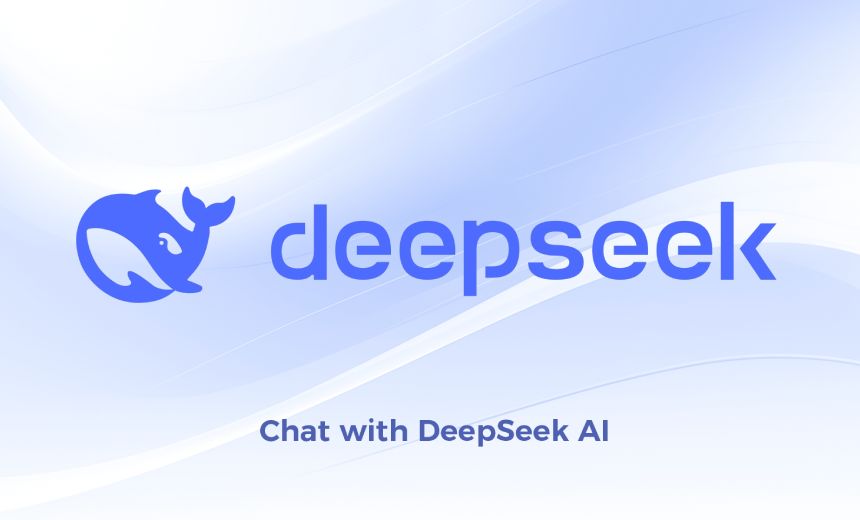
The artificial intelligence landscape has been significantly disrupted by the emergence of DeepSeek R1, a groundbreaking AI model developed by the Chinese startup DeepSeek. This development has not only showcased technological advancements but also led to notable shifts in global markets and elicited reactions from prominent figures.
About DeepSeek and Its Founder
DeepSeek was founded in 2023 in Hangzhou, China, by entrepreneur Liang Wenfeng. Initially a hedge fund manager, Wenfeng transitioned into the tech industry, aiming to make AI more accessible and cost-effective. The company’s mission centers on democratizing artificial intelligence, providing advanced AI solutions at a fraction of the typical cost.
The Launch of DeepSeek R1
On January 20, 2025, DeepSeek unveiled its AI model, R1. This model rivals existing AI technologies in reasoning capabilities while being significantly more cost-effective. The AI assistant quickly became the top free app on Apple‘s App Store, surpassing competitors like ChatGPT.
Impact on Competitors and Global Markets
The introduction of DeepSeek R1 has had profound effects on major tech companies and global stock markets:
- Nvidia: Known for its dominance in AI computing, Nvidia experienced a sharp decline in its stock value. Shares plunged nearly 18%, resulting in a loss of approximately $593 billion in market capitalization—the largest single-day loss for any company to date.
- Broader Tech Industry: The Nasdaq 100 fell about 3%, and the S&P 500 declined nearly 2%. Companies such as Microsoft, Palantir, and Alphabet also saw significant stock decreases. This downturn extended to tech firms in Japan and the Netherlands, indicating DeepSeek’s global impact.
Political Reactions
The rapid ascent of DeepSeek has caught the attention of global leaders. U.S. President Donald Trump referred to DeepSeek’s AI advancements as a “wakeup call” for American tech firms. He emphasized the need for U.S. industries to focus on competition and innovation in response to this development.
Also read: Donald Trump’s Role in TikTok’s U.S. Ban and Restoration
Future Prospects
DeepSeek’s emergence underscores the dynamic nature of the AI industry. Its cost-effective solutions have not only challenged established tech giants but also prompted a reevaluation of AI development strategies worldwide. As the company continues to innovate, stakeholders across industries will be closely monitoring its trajectory.
- January 24, 2025
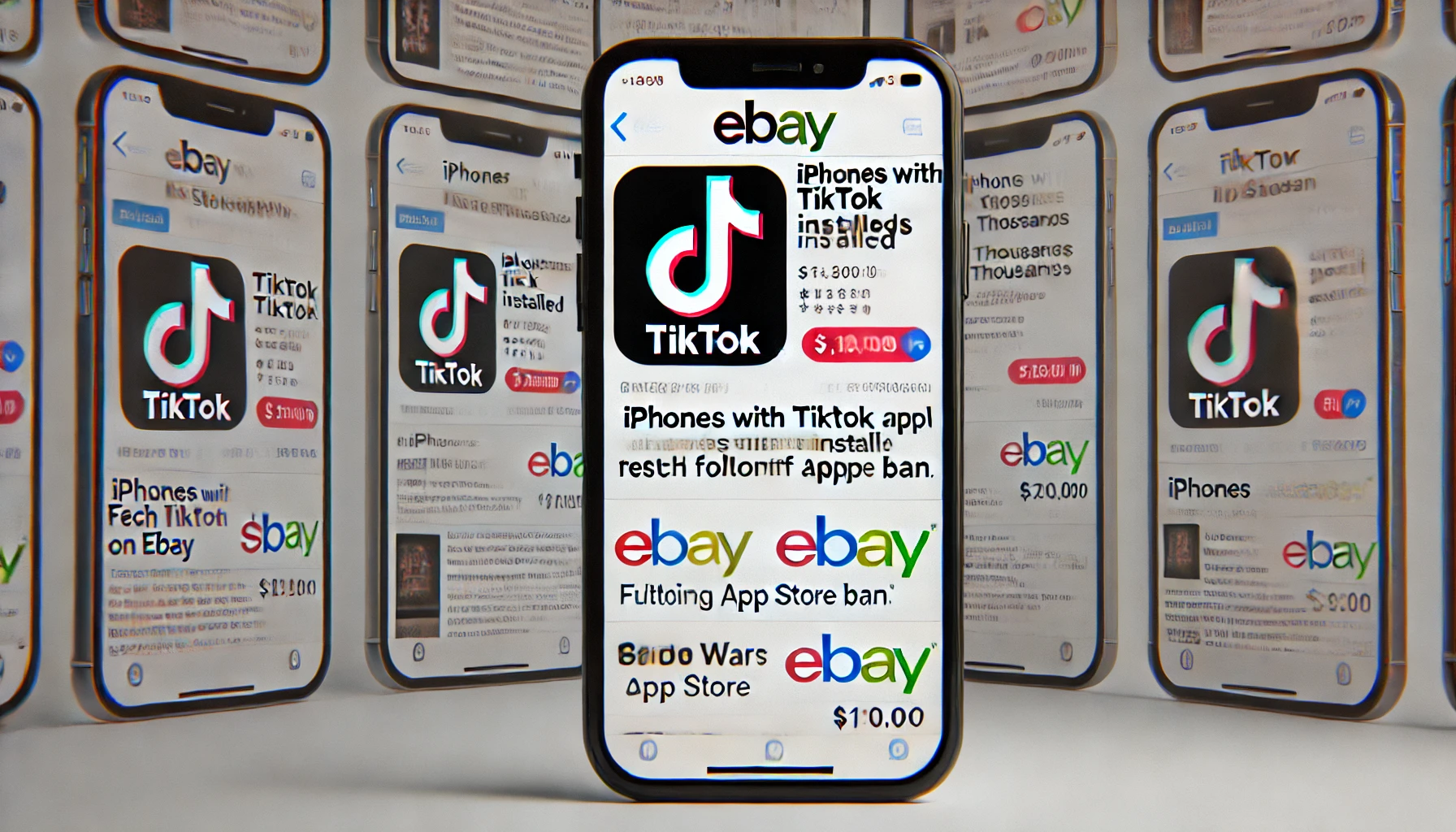
TikTok iPhones on eBay – In a surprising turn of events, iPhones preloaded with TikTok have skyrocketed in value on platforms like eBay and Facebook Marketplace. Following a temporary ban that made TikTok unavailable on major U.S. app stores, some users are resorting to purchasing devices with the app already installed. This phenomenon has not only ignited discussions about the cultural and economic impact of TikTok but has also drawn parallels to previous instances of app-driven device value surges. Let’s dive deep into this trending topic to understand its implications, the reasons behind it, and what the future holds.
The TikTok Ban: A Catalyst for Unprecedented Demand
On January 19, 2025, TikTok faced a temporary Tiktok ban in the United States due to concerns over national security and data privacy. This led to its removal from both Apple’s App Store and Google Play. While the ban was briefly delayed by an executive order, the app’s unavailability created a wave of uncertainty among its users. Mobile app developers are now exploring innovative ways to ensure app availability during such geopolitical restrictions, addressing both security concerns and user needs.
The decision to ban TikTok stemmed from ongoing debates about its ownership by ByteDance, a Chinese company. Critics argued that the app posed a risk to U.S. user data, while proponents of the app cited its immense cultural significance and entertainment value. Regardless of the debate, the ban’s immediate impact was clear: millions of users found themselves unable to download or update the app.
The eBay Gold Rush: TikTok-Enabled iPhones for Sale
Almost immediately after the ban, listings for iPhones with TikTok pre-installed began appearing on eBay and other resale platforms. Sellers recognized the unique value of these devices, especially for users who had deleted the app or missed the opportunity to download it before the ban.
Notable Listings
- iPhone 15 Pro Max with TikTok Installed – Listed at $3,100, this device garnered two bids before selling.
- iPhone XR with TikTok, CapCut, and Other Editing Apps – Priced at $111,000, this listing emphasized its “unique” combination of apps.
- iPhone 7 with TikTok – Despite being an older model, this device was listed for $5,000.
These listings reflect a wide range of prices, with some reaching astronomical figures like $1 million. However, not all listings result in sales, indicating a mix of genuine interest and opportunistic pricing.
Parallels to the Flappy Bird Craze
This isn’t the first time an app’s unavailability has driven up the value of devices with it installed. In 2014, the mobile game Flappy Bird was removed from app stores by its creator, Dong Nguyen, who cited concerns over the game’s addictive nature.
Following its removal, devices with Flappy Bird installed were listed for hundreds of dollars to tens of thousands of dollars on resale platforms. The current TikTok craze mirrors this trend, though the scale and cultural impact of TikTok far exceed those of Flappy Bird.
Why Are TikTok-Enabled iPhones So Valuable?
The sudden spike in demand for TikTok-installed iPhones can be attributed to several factors:
1. Cultural Significance
TikTok isn’t just a social media platform; it’s a cultural phenomenon. With over a billion users worldwide, the app has reshaped content creation, marketing, and entertainment. For many, losing access to TikTok feels like being cut off from a vital part of modern culture.
2. Fear of Missing Out (FOMO)
The ban triggered a psychological response known as FOMO. Users who hadn’t downloaded the app before the ban began scrambling to find ways to access it. For some, purchasing a preloaded device was the easiest solution.
3. Limited Availability
The scarcity of TikTok-installed devices drove up their perceived value. With TikTok unavailable for new downloads, these devices became the only way for some users to enjoy the app.
4. Speculative Buyers
Some buyers view these devices as collectibles or investments, betting that their value will increase over time.
Economic and Ethical Implications
While the surge in demand for TikTok-enabled iPhones highlights the app’s cultural impact, it also raises questions about the ethics and economics of such transactions.
1. Scalping Concerns
Much like ticket scalping, reselling iPhones at inflated prices can be seen as exploiting demand. Critics argue that this practice unfairly capitalizes on users’ desperation.
2. Buyer Risks
Purchasing a used device solely for an app carries risks. Buyers may encounter:
- Software Compatibility Issues – Future iOS updates could render older TikTok versions unusable.
- Security Concerns – Pre-owned devices may contain malware or compromised accounts.
- Scams – Not all listings are legitimate, and some buyers may fall victim to fraud.
3. Economic Insights
The phenomenon sheds light on how digital scarcity can create new economic opportunities. It also highlights the growing intersection of technology, culture, and commerce.
Expert Opinions
Tech Analysts
Many experts view this trend as a testament to TikTok’s unparalleled influence. “TikTok’s impact goes beyond social media. It’s a cultural juggernaut,” says Sarah Green, a technology analyst. “The demand for TikTok-installed devices underscores its significance in everyday life.”
Psychologists
Psychologists point to FOMO as a key driver behind this phenomenon. “When something as popular as TikTok becomes unavailable, it triggers a scarcity mindset,” explains Dr. James Carter, a behavioral psychologist. “People are willing to pay a premium to avoid missing out.”
Consumer Advocates
Consumer rights advocates urge caution, warning buyers to carefully evaluate listings before making a purchase. “Scammers often exploit trends like this,” says Maria Lopez, a consumer protection expert. “Do your research and only buy from reputable sellers.”
What Happens Next?
As the TikTok ban continues, several potential outcomes could shape the future of this trend:
1. Reinstatement of TikTok
If TikTok is reinstated on app stores, the demand for preloaded devices may plummet. This would likely leave speculative buyers and scalpers holding devalued inventory.
2. Emergence of Alternatives
The ban could drive users to explore alternative platforms, such as Instagram Reels or YouTube Shorts. However, these alternatives may not fully replicate TikTok’s unique features and community.
3. Long-Term Collectibles Market
Even if TikTok returns, some devices may retain value as collectibles. Similar to Flappy Bird-enabled devices, TikTok-installed iPhones could become sought-after artifacts of digital culture.
Conclusion
The unexpected demand for TikTok-installed iPhones offers a fascinating glimpse into the intersection of technology, culture, and commerce. While the trend highlights TikTok’s cultural significance, it also raises important questions about digital scarcity, ethical reselling practices, and the future of app-driven device value. As this story continues to unfold, it’s clear that TikTok’s impact extends far beyond the confines of a smartphone screen.

